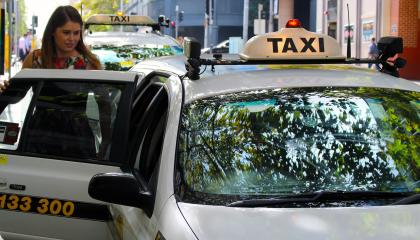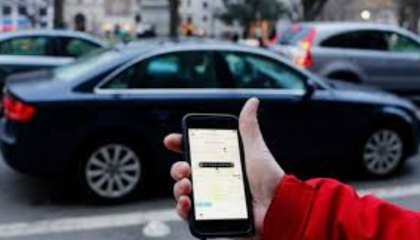Taxi and hire vehicle (including rideshare) drivers must take care of their own safety, and those around them.
While service providers have the primary responsibility for ensuring safe services, there are safety duties and
Duty of drivers
Drivers must:
- take care of their own health and safety
- not act or fail to act in a way that could affect the health and safety of others
- comply with the reasonable instructions of the taxi or booking service provider
- cooperate with any reasonable health and safety policy or procedure of the service provider
Failure to comply with a safety duty is a criminal offence.
Standards for drivers
There are specified standards for everyone involved in providing passenger services in NSW.
The law identifies which persons are responsible for ensuring these safety standards are met.
Drivers should be aware of the safety standards that apply to them. Drivers who are also
Read:
- Taxi licence holder obligations
- Safety standards for vehicles providing booked services
- Safety standards for taxis
The table below outlines some of the safety responsibilities that drivers must comply with under the law.
| Safety Standard | Description |
|---|---|
|
Vehicle standards |
Vehicles must be registered and be properly maintained by a mechanic licenced to carry out such repairs. Drivers must not operate a vehicle they know, or ought reasonably to know, is non-compliant with the vehicle standards. |
|
Wheelchair accessible vehicles |
Drivers of wheelchair accessible hire vehicles / taxis must be competent in the safe loading, transporting and unloading of passengers in wheelchairs.
Read the Safety standards for booked vehicles or Safety standards for taxis for more information on the standards of wheelchair accessible vehicles. |
|
Signs, lights and markings |
Taxis must be identified as taxis through appropriate signs. For further information see Safety Standards for Taxis.
Hire vehicles, including rideshare, must display a retroreflective sign that makes it clear that the vehicle is being used to provide a passenger service . For further information see Safety standards for vehicles providing booked services. |
|
Motorcycle drivers |
The driver (rider) of a motorcycle being used to provide a passenger service must be competent in the operation of the motorcycle while carrying a passenger. |
Driver eligibility
Anyone wanting to become a taxi or hire vehicle driver must hold an unrestricted Australian driver licence and pass medical and criminal background checks. It is the responsibility of the driver to communicate any changes to their licence, health or criminal history to their service provider.
Taxi and booking service providers have a responsibility to ensure drivers:
- have held an unrestricted Australian driver licence (not a probationary licence) for at least 12 months in the preceding four years.
- meet medical standards for commercial vehicle drivers.
Taxi drivers must meet additional standards to those drivers who only provide booked services.
| Safety Standard | Description |
|---|---|
|
Driver identification |
Taxi drivers must display an identity document provided by their taxi service provider. The driver identification document must be clearly visible to all passengers in the taxi. |
|
Fare calculation devices |
Taxi drivers must ensure the fare calculation device (meter) is visible and accurate. |
|
English language standards (Sydney) |
Taxi drivers in Sydney Metropolitan Transport District must have sufficient competency in English to be able to communicate with passengers. The Regulation outlines which standards a driver must meet in Clause 27. |
Drivers are ineligible to drive a taxi or hire vehicle if:
- a previous driver authority (under the Passenger Transport Act 1990 or the Passenger Transport Act 2014 ) was cancelled (other than on medical grounds), or their application for a driver authority was rejected, in the past 10 years on the grounds that they were not a fit and proper person.
Passenger Transport Licence Code
Driver licensing and vehicle registration is managed by Transport for NSW which also manages the passenger transport licence code (PT Code). In addition to holding a driver licence, a driver of a passenger vehicle must meet medical standards for commercial vehicle drivers.
While it is not compulsory, drivers who wish to drive a taxi or hire vehicle may apply for a passenger transport licence code at a Service NSW centre.
For more information visit the PT Code page.


